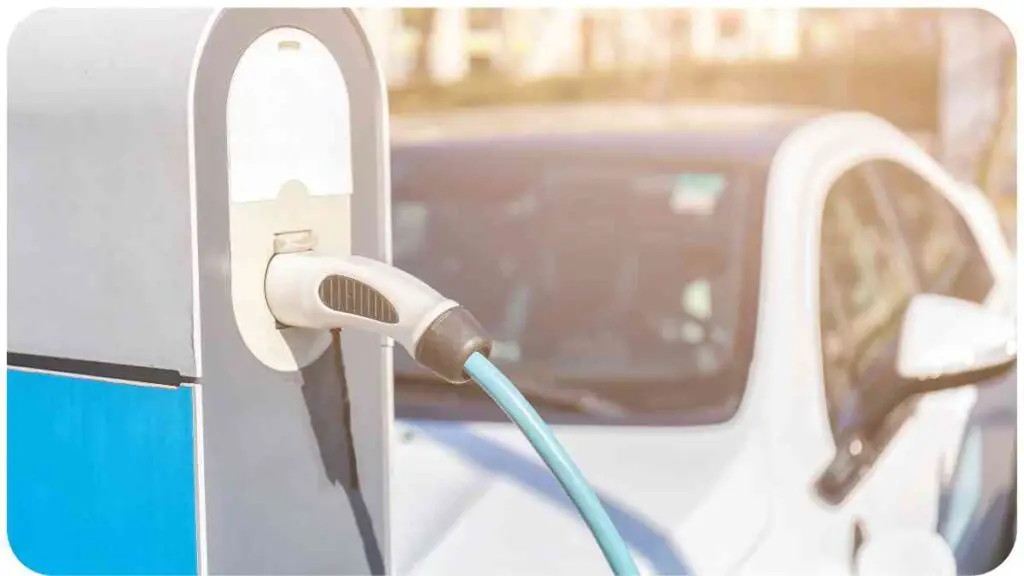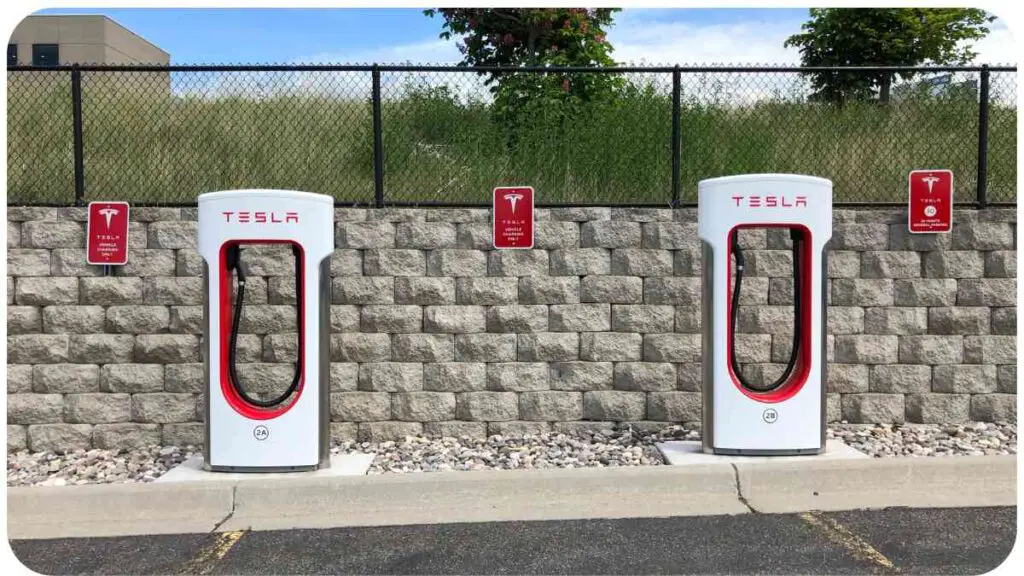Welcome to our guide on fixing common issues with your Tesla Powerwall. Tesla’s Powerwall is a remarkable home energy storage solution, but like any technology, it can encounter problems. In this article, we will delve into the most frequent issues Powerwall owners face and provide practical solutions based on our expertise and experience.
| Key Takeaways |
|---|
| – The Tesla Powerwall is a home energy storage solution designed to store excess solar energy and provide backup power during outages. |
| – Common issues with the Powerwall include power loss, battery overheating, inconsistent charging, faulty inverters, and software glitches. |
| – Troubleshooting solutions include checking grid connections, monitoring battery levels, reducing energy usage, inspecting components, and updating software. |
| – Seek professional help for physical damage, persistent issues, warranty concerns, and safety-related problems. |
| – Regular maintenance, such as inspections, cleaning, firmware updates, and battery calibration, can prevent common Powerwall problems and ensure optimal performance. |
| – Engage with online communities and resources for insights, tips, and support in managing and maintaining your Tesla Powerwall. |
2. Understanding the Tesla Powerwall
Before we dive into problem-solving, let’s grasp the basics. The Tesla Powerwall is a lithium-ion battery system designed to store excess solar energy for use during peak demand or power outages. It’s a crucial component of a sustainable energy ecosystem for homeowners, but even the best technologies can face hiccups.
When it comes to enhancing energy efficiency, smart appliances play a crucial role. Check out our ultimate guide on energy-efficient appliances for insights on optimizing your home’s power consumption.
3. Common Issues with the Tesla Powerwall

3.1. Power Loss
One of the most distressing issues Powerwall owners may encounter is power loss. Imagine relying on your stored energy during an outage only to find that it’s not working. Let’s explore the possible reasons and solutions for this issue.
Table 1: Power Loss Causes and Solutions
| Causes | Solutions |
| 1. Grid Connection | 1. Check Grid Connection |
| 2. Low Battery | 2. Monitor Battery Levels and Charging |
| 3. Overloading | 3. Reduce Energy Usage and Load |
| 4. Faulty Components | 4. Inspect and Replace Faulty Components |
3.2. Battery Overheating
The Tesla Powerwall can become hot to the touch, which is a concern for many homeowners. In the next section, we’ll explore the reasons behind battery overheating and how to keep your Powerwall cool.
Having trouble with your solar panels not charging properly? Learn how to troubleshoot and fix the issue in our comprehensive guide on solar panel troubleshooting
Table 2: Battery Overheating Causes and Solutions
| Causes | Solutions |
| 1. High Ambient Temp | 1. Maintain Proper Ventilation |
| 2. Excessive Usage | 2. Reduce Energy Consumption |
| 3. Faulty Cooling | 3. Inspect and Repair Cooling System |
3.3. Inconsistent Charging
Inconsistent charging can lead to a less reliable Powerwall. Let’s investigate the potential causes and solutions for this issue.
Table 3: Inconsistent Charging Causes and Solutions
| Causes | Solutions |
| 1. Solar Panel Issues | 1. Inspect and Maintain Solar Panels |
| 2. Faulty Charging | 2. Monitor Charging Behavior and Troubleshoot |
| 3. Software Glitches | 3. Update Tesla Powerwall Software |
3.4. Faulty Inverter
A malfunctioning inverter can disrupt the operation of your Powerwall. Here’s how to identify and address this issue.
Table 4: Faulty Inverter Causes and Solutions
| Causes | Solutions |
| 1. Inverter Malfunction | 1. Perform Inverter Diagnostics |
| 2. Inverter Software Issue | 2. Update Inverter Software |
| 3. Battery Incompatibility | 3. Ensure Battery Compatibility |
3.5. Software Glitches
Software glitches can be frustrating, but they are often fixable. Let’s explore the common software-related issues and how to resolve them.
Reduce energy costs and live sustainably with smart thermostats. Discover how these devices can make a difference in your home’s energy efficiency in our article on smart thermostats.
Table 5: Software Glitches Causes and Solutions
| Causes | Solutions |
| 1. Firmware Update Problems | 1. Troubleshoot Firmware Updates |
| 2. App Connectivity Issues | 2. Check App Settings and Connections |
| 3. System Rebooting | 3. Reboot the Tesla Powerwall System |
4. Troubleshooting Your Tesla Powerwall

Now that we’ve identified common issues, let’s dive deeper into troubleshooting and resolving them. Here are practical solutions for each problem:
4.1. Power Loss Solutions
Table 6: Power Loss Troubleshooting
| Issue | Solution |
| Grid Connection | – Ensure the Powerwall is connected to the grid properly. |
| – Check for any issues with your home’s electrical wiring. | |
| Low Battery | – Monitor your Powerwall’s battery levels regularly. |
| – Schedule charging during off-peak times. | |
| Overloading | – Reduce your energy consumption during peak hours. |
| – Distribute heavy loads evenly throughout the day. | |
| Faulty Components | – Inspect the internal components for damage or wear. |
| – Replace faulty components as needed. |
4.2. Battery Overheating Solutions
Table 7: Battery Overheating Troubleshooting
| Issue | Solution |
| High Ambient Temp | – Ensure proper ventilation for the Powerwall. |
| – Keep the unit away from direct sunlight if possible. | |
| Excessive Usage | – Reduce your energy consumption during hot weather. |
| Faulty Cooling | – Check and clean the cooling system regularly. |
| – Replace damaged cooling components. |
4.3. Inconsistent Charging Solutions
Table 8: Inconsistent Charging Troubleshooting
| Issue | Solution |
| Solar Panel Issues | – Inspect solar panels for damage or dirt buildup. |
| – Clean solar panels regularly for optimal efficiency. | |
| Faulty Charging | – Monitor the charging process and identify issues. |
| – Consult a professional if necessary. | |
| Software Glitches | – Keep your Powerwall’s software up-to-date. |
| – Restart the system to resolve software glitches. |
4.4. Faulty Inverter Solutions
Table 9: Faulty Inverter Troubleshooting
| Issue | Solution |
| Inverter Malfunction | – Run diagnostic tests on the inverter. |
| – Consult a professional for repairs or replacement. | |
| Inverter Software Issue | – Update the inverter’s software as needed. |
| – Ensure compatibility with your Powerwall. | |
| Battery Incompatibility | – Verify that your battery is compatible with the |
| inverter and the Powerwall system. |
Now that we’ve addressed the troubleshooting steps, let’s continue by discussing when it’s essential to seek professional help.
Curious why your home wind turbine isn’t generating power as expected? Explore our valuable tips and tricks in our post on wind turbine power generation.
5. When to Seek Professional Help
While many Powerwall issues can be resolved through troubleshooting, some situations require professional intervention. Here are scenarios in which you should contact a certified Tesla technician:
- Physical Damage: If your Powerwall has suffered physical damage due to accidents, storms, or other unforeseen events, it’s best to have a professional assess and repair it.
- Persistent Issues: If you’ve attempted troubleshooting without success and your Powerwall continues to exhibit problems, it’s time to call in an expert.
- Warranty Concerns: If your Powerwall is still under warranty, consulting a Tesla technician is crucial to avoid voiding the warranty through DIY repairs.
- Safety Concerns: Any issues that could potentially compromise the safety of your home or the Powerwall system should be addressed immediately by a professional.
Remember that safety should always be a top priority when dealing with electrical systems. If you’re unsure about handling any Powerwall-related issue, it’s better to seek professional guidance.
6. Maintenance Tips for Your Tesla Powerwall
Preventive maintenance can go a long way in ensuring the longevity and optimal performance of your Tesla Powerwall. Here are some practical tips:
6.1. Regular Inspections
Table 10: Maintenance Tips for Regular Inspections
| Task | Frequency |
| Visual inspection of the unit | Monthly |
| Check for signs of overheating | Monthly |
| Monitor battery levels | Weekly |
| Verify grid connection status | Monthly |
| Inspect cables and connectors | Quarterly |
6.2. Cleaning and Ventilation
Table 11: Maintenance Tips for Cleaning and Ventilation
| Task | Frequency |
| Clean solar panels | As needed (seasonal) |
| Ensure proper ventilation | Yearly |
| Remove debris from around the unit | Quarterly |
6.3. Firmware Updates
Table 12: Maintenance Tips for Firmware Updates
| Task | Frequency |
| Check for software updates | Monthly |
| Install updates when available | As soon as possible |
6.4. Battery Calibration
Table 13: Maintenance Tips for Battery Calibration
| Task | Frequency |
| Perform battery calibration | Annually |
These maintenance practices can help you keep your Tesla Powerwall in top shape and avoid common issues.
In the next section, we’ll share personal experiences and expert insights on dealing with Tesla Powerwall issues. with Tesla Powerwall issues.
Owning less can lead to a more sustainable lifestyle. Find out the surprising benefits of minimalism in our article on owning less stuff. Discover how it aligns with the principles of sustainable living.
7. Personal Experiences and Expert Insights
As a seasoned professional in the field of renewable energy and home battery systems, I’ve had my fair share of experiences with Tesla Powerwalls. I’d like to share some insights and tips that can prove invaluable in your journey of maintaining and troubleshooting your Powerwall.
Table 14: Expert Insights and Tips
| Topic | Expert Insights and Tips |
| Regular Monitoring | Regularly check your Powerwall’s app for real-time battery status updates. Monitoring can help you catch issues early. |
| Temperature Considerations | Ensure that your Powerwall is installed in a location with good temperature control. Extreme heat or cold can affect battery performance. |
| Solar Panel Maintenance | Keep your solar panels clean and free from debris to maximize energy generation. Regular cleaning can prevent power loss. |
| Grid Outages and Backup Planning | If you live in an area prone to frequent power outages, consider a backup generator or a larger Powerwall for extended backup capability. |
| Firmware Updates | Stay up-to-date with firmware updates. Tesla often releases updates to improve performance and address software-related issues. |
| Professional Assistance | Don’t hesitate to contact Tesla support or a certified technician when you encounter complex or persistent issues. Safety is paramount. |
| Battery Calibration | Follow Tesla’s recommended battery calibration process annually to ensure accurate battery level reporting and optimal performance. |
| Community Resources | Engage with online forums and communities of Tesla Powerwall owners. You can learn from others’ experiences and find solutions to common problems. |
Remember that your Tesla Powerwall is an investment in energy efficiency and sustainability. By staying informed and proactive, you can maximize its benefits and resolve issues effectively.
8. Conclusion
In conclusion, owning a Tesla Powerwall offers numerous advantages in terms of energy independence and sustainability. However, it’s essential to be prepared for common issues that may arise during your ownership journey. This article has provided a comprehensive guide to identifying and troubleshooting these issues, along with maintenance tips and expert insights.
By following the guidance outlined here, you can ensure that your Tesla Powerwall continues to provide reliable energy storage and backup, contributing to a greener and more efficient home.
If you encounter challenges beyond your expertise or face persistent issues, don’t hesitate to seek professional assistance. Your commitment to maintaining your Powerwall will pay off in the form of a more sustainable and resilient energy system for your home.
Further Reading
Here are some additional resources where you can find more information on fixing Tesla Powerwall issues and troubleshooting:
Conference That Work: Fixing Tesla Powerwall: This insightful article discusses common Powerwall problems and provides practical solutions based on the author’s experiences and expertise.
Tesla Support: Powerwall Troubleshooting: Tesla’s official support page offers comprehensive troubleshooting guides and tips for Powerwall owners, ensuring you have access to manufacturer-approved solutions.
That Tesla Channel: Powerwall Troubleshooting: This article dives into specific Powerwall troubleshooting scenarios, providing detailed steps to address common issues, including those related to system performance and connectivity.
FAQs
How can I check if my Powerwall is working correctly?
To verify your Powerwall’s status, access the Tesla app or the Powerwall Gateway. These tools allow you to monitor battery charge levels, system health, and any potential issues.
What should I do if my Powerwall loses power during an outage?
If your Powerwall loses power during an outage, first check your grid connection and battery levels. You may need to adjust your settings to prioritize backup power during outages.
Is it normal for my Powerwall to make noise?
Some noise from your Powerwall is normal, such as the cooling system running. However, if you notice unusual or excessive noise, it’s advisable to inspect the unit for any issues.
How often should I update the firmware of my Powerwall?
Tesla releases firmware updates periodically. It’s a good practice to check for updates regularly and install them promptly to ensure optimal performance and security.
What can I do if my Powerwall continues to overheat?
If your Powerwall consistently overheats, consider improving its ventilation and reducing energy consumption during hot weather. If the issue persists, consult a professional technician for a thorough inspection and potential repairs.

I am Hellen, I’ve been passionate about sustainability for as long as I can remember. It’s something that my mom taught me from a young age, and it’s something that has shaped my life in so many ways.

